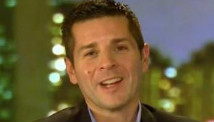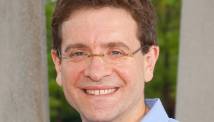A killer Christmas storm is churning its way north leaving hundreds of thousands without power and snarling travel plans for people trying to get home after the holiday.
Six people have died, mostly in weather related car crashes, as the South was hammered by as many as 34 tornadoes and a lethal coating of sleet and snow that spread from the South into the Midwest.
Over 280,000 customers are without across the South today with 100,000 without power in Little Rock, Ark. alone.
The wild weather isn't over. Eighteen states from Tennessee to Maine are under winter storm warnings, blizzard warnings and advisories. Between one and two feet of snow is expected from Indianapolis to Cleveland to Syracuse, N.Y. and into Maine.
The number of flight cancellations nationwide is growing by the hour on one of the busiest travel days of the holiday season. But by noon more than 800 flights were canceled, according to FlightAware.com.
"Traveling will definitely be affected as people go home for the holidays," Bob Oravec, lead forecaster for the National Weather Service, told ABC News. "Anywhere from the Mississippi Valley into the Ohio Valley and the Northeast, there's definitely going to be travel issues as we have heavy snow and some very high winds."
Flights were disrupted in traffic hubs like Indianapolis International Airport because of heavy snowfall as well as Dallas/Fort Worth which was hit with five inches of snow on Christmas, a rarity for the city.
PHOTOS: Christmas Storms
Holiday Leftovers Recipes: Chicken and Pork Tacos Watch Video
Cancellations and delays are expected to ripple into the Northeast today where high winds, flooding and more than a foot of snow in some areas is expected.
Heavy winds could further complicate matters for travelers. According to Flightaware.com, fliers are experiencing delays up to an hour in Baltimore, Philadelphia, New York City and Washington, D.C.
Some airlines are issuing flexible travel policies for travelers holding airline tickets today and tomorrow. Delta Airlines is allowing travelers to change their flights through Jan. 2 with no penalty. United Airlines has enacted a similar policy, as has Southwest. Policies vary slightly from airline to airline, travelers should check their carrier's web site for specifics. JetBlue, which has a major presence in New York, has not yet issued a policy but warned travelers via its web site to be prepared for delays.
Wild Holiday Weather
Severe weather on Christmas day spawned 34 tornado reports from Texas to Alabama.
In Mobile, Ala., a wide funnel cloud was barreled across the city as lightning flashed inside like giant Christmas ornaments.
The punishing winds mangled Mobile's graceful ante-bellum homes, and today, dazed residents are picking through debris while rescue crews search for people trapped in the rubble.
Teresa Mason told ABC News that she and her boyfriend panicked when they saw the tornado heading toward them in Stone County, in southern Mississippi, but she says they were actually saved when a tree fell onto the truck.
"[We] got in the truck and made it out there to the road. And that's when the tornado was over us. And it started jerking us and spinning us, "she said."This tree got us in the truck and kept us from being sucked up into the tornado."
The last time a number of tornadoes hit the Gulf Coast area around Christmas Day was in 2009, when 22 tornadoes struck on Christmas Eve morning, National Weather Service spokesman Chris Vaccaro told ABC News.













